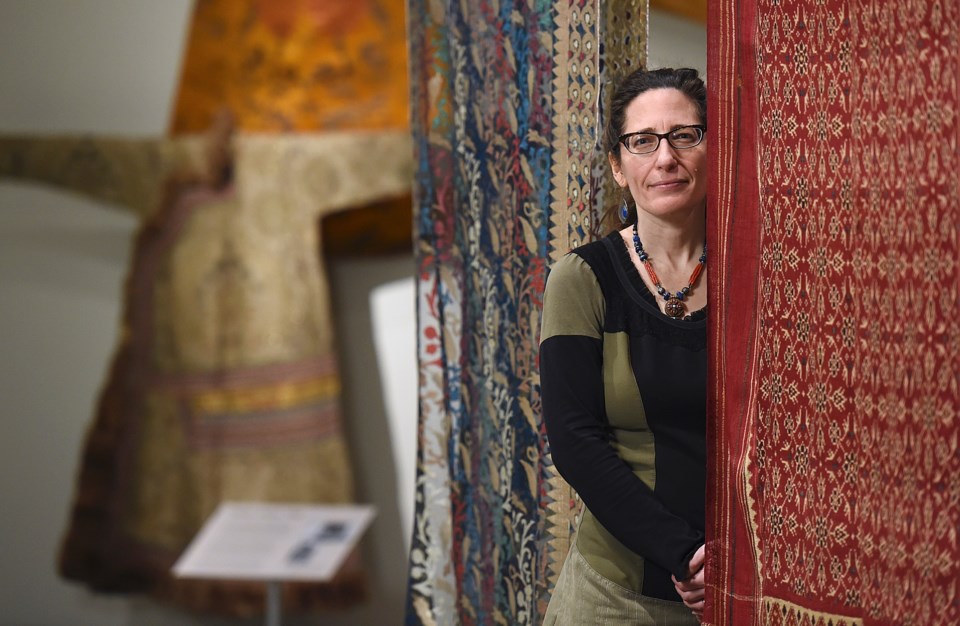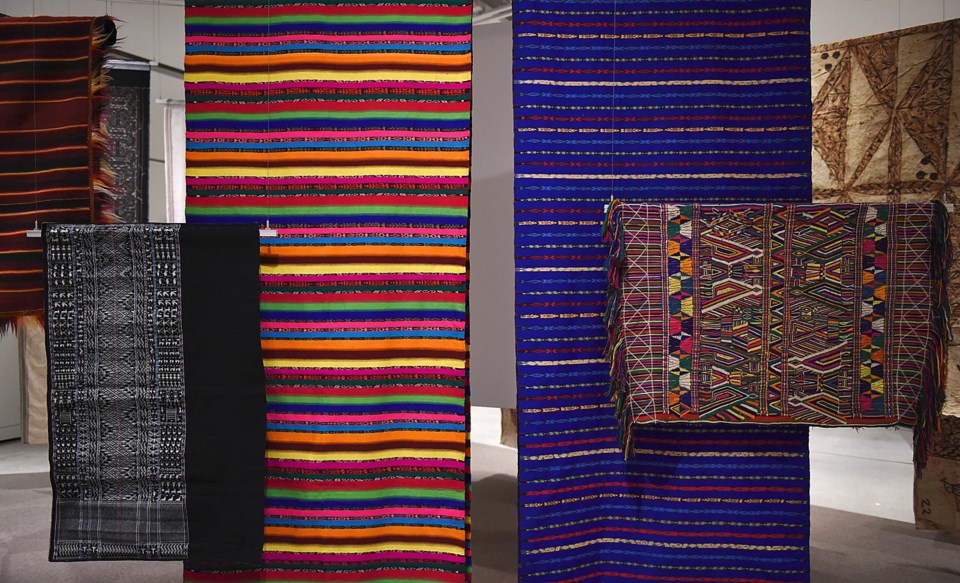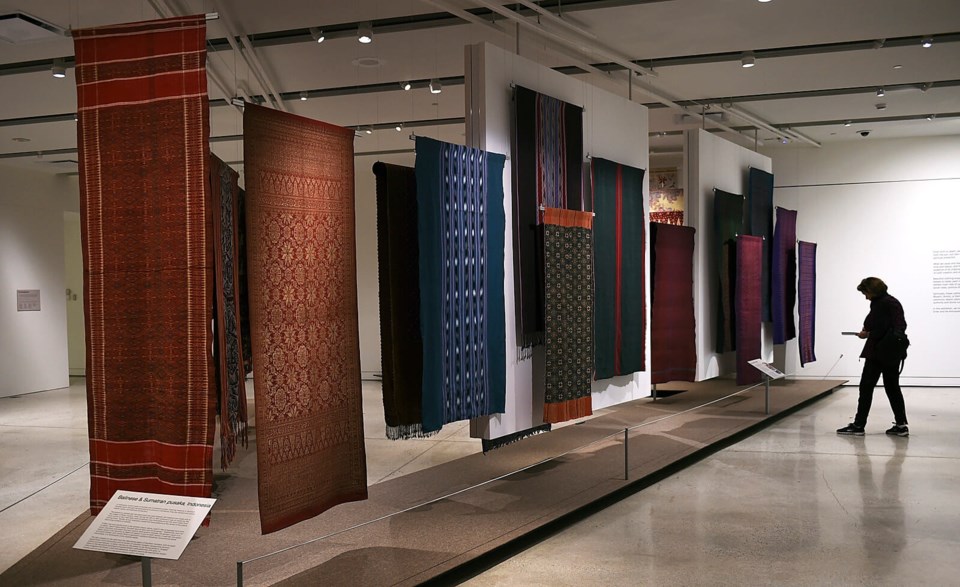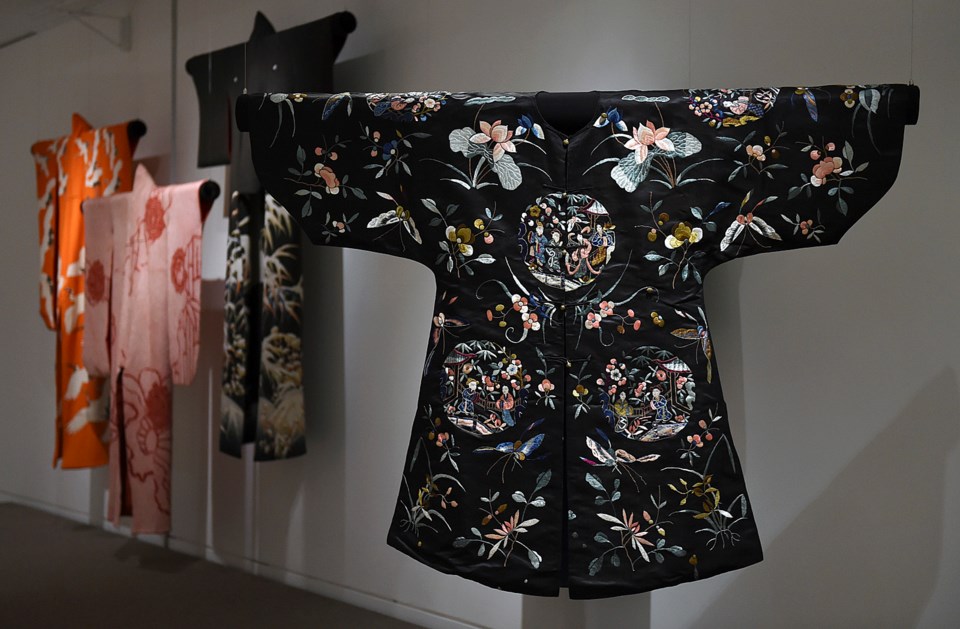All humans, from any era or culture, have had to cover their bodies in clothing. This commonality was the thinking behind Layers of Influence: Unfolding Cloth Across Cultures, a beautiful exhibition that opened last month at the Museum of Anthropology.
It has already attracted a varied audience – not just those with an interest in anthropology, but artists, weavers, knitters and fashion fans. “I wanted visitors to be able to sit and imagine, and look at the colour and diversity of symbolism and expression, and absorb it viscerally,” says Dr. Jennifer Kramer, the exhibit’s curator. “The idea was to create an intimate relationship, so that people could relate – not see these as artefacts from far-off times or places that are different from us… but to actually make and see all these connections in how humans are the same.”Kramer selected pieces from the museum’s 6,000-piece textile archive. One-hundred and thirty-four made the final cut, including chilkat weavings, Tibetan robes (chuba), Indian patalu (heirloom saris), and Peruvian tunics that are decorated with visual representations of music. “We purposely chose pieces that could be unfolded, that could be hung from the ceiling to show their full impact,” says Dr. Kramer. “As a result, we were selecting clothing that was draped around the body: sarongs, saris, voluminous robes that would amplify the body of the wearer, and blankets.”

She and designer Skooker Broome came up with a hanging-display concept that emphasizes the “unfolding layers” metaphor and also allows visitors to walk among the textiles. “We wanted to fill the space and not put the pieces on staid models,” she says.
While there is politics in clothing – inequality of power, trade issues and child labour, among other issues – the exhibit doesn’t aim to be didactic; hence, the minimal captioning of the displays. “We do write our politics and connections on our clothes. It comes up [in the exhibit], but I leave it floating there. We wanted to leave the breadcrumbs in the warps and wefts. For example, we put the Tibetan pieces in one spot and the Chinese in another, but you can stand in the middle and see both.”
Layers of Influence also demonstrates the blurred lines between cultures and the ways they influence each other: Indonesian hinggi (noblemen’s ceremonial cloths) with what look like European heraldic symbols; a Tongan bark cloth that bears the Christian dove of peace; a silk, cotton and gold wedding sari from India, painstakingly mended by Kramer’s colleagues in Vancouver.
In April, the textiles will be taken down and returned to storage. But I, for one, hope their message lingers: that we are all human, more the same than different, and that there are no solid boundaries between cultures. It’s an important thing to remember right now.
Layers of Influence: Unfolding Cloth Across Cultures is at the Museum of Anthropology, UBC (6393 NW Marine), until Apr. 9. MOA.UBC.ca






